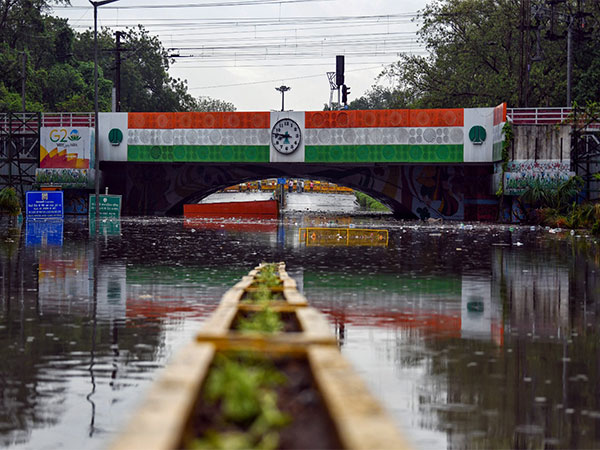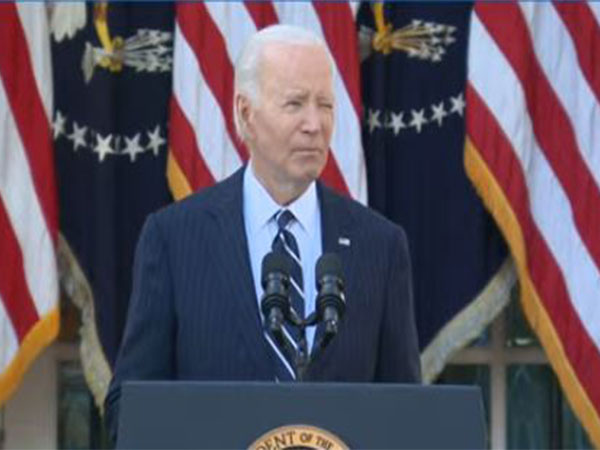New Delhi [India], June 28 (ANI): As heavy rain lashes the national capital in the early hours of Friday, the city’s electricity body, BSES Yamuna Power Limited, said that it took longer than usual to restore electricity in some areas as we had to wait for the water to recede.
The BSES spokesperson said that heavy rains led to instances of power disruptions in some areas of the city, primarily due to water logging and trees and their branches falling on electricity cables.
To safeguard human lives and prevent electrocution, it became necessary to switch off the electricity supply in some waterlogged and low-lying areas as a precautionary measure, he said.
BSES Operations and Maintenance teams were on high alert, and Quick Response Teams (QRTs) were pressed into service, he added.
The BSES spokesperson said that while power supply was restored quickly in most cases, it took a little longer than usual to restore electricity in some areas as they had to wait for the water to recede.
Meanwhile, as several areas of Delhi got waterlogged owing to heavy rains, Delhi Minister Atishi said that several key decisions have been taken to fight waterlogging.
Atishi said that a combined emergency control room of all water-related departments like Delhi Jal Board, Municipal Corporation of Delhi and Irrigation and Flood Control Department will be formed, which will monitor waterlogging 24 hours a day and take action.
The Minister also said that all departments will inspect their static and mobile water pumps by tonight and ensure that all pumps are ready to pump out water.
Every department will form Quick Response Teams, which will be deployed to remove waterlogging at ground level, she said.
Recyclers will be installed in every zone of the Delhi Jal Board so that if stormwater drains get filled with water and silt, they can be cleaned. Workers will also be deployed as per the requirement for this, the minister said.
“For the first time since 1936, Delhi has received 228 mm of rain in 24 hours, i.e. 25 pc of the total monsoon rainfall (800 mm) in Delhi has occurred in just 24 hours. Due to this, drains have overflowed in many areas, and it took time to drain out the rainwater,” Atishi said in a post on ‘X’.
Following the emergency meeting, Delhi Minister Atishi said in a press conference, “We conducted an emergency meeting regarding the waterlogging issue due to the heavy rainfall. It was chaired by 4 ministers of the Delhi government… It was attended by all the senior officials of the Delhi government. We made several important decisions for the upcoming days.”
Atishi said that the Delhi government has identified 200 hotspots that are prone to waterlogging. She said that the reason behind waterlogging is excessive rainfall, which exceeds the capacity of drains.
“We have identified around 200 hotspots till the last rain. Out of these, 40 hotspots are under CCTV surveillance by PWD… You have to understand that if Delhi receives rainfall of 228 mm, then it will take time to decrease the water level… Right now, Delhi has received more rainfall than the capacity of the drains. That’s why we are witnessing waterlogging at several places…,” she said.
Delhi Minister Saurabh Bharadwaj said that several decisions were taken in the meeting to tackle water logging in the national capital.
“The traffic police and area representatives have been told to identify the vulnerable areas for waterlogging and make a list of it. The Chief Secretaries have been told to review the list of all the departments… There are a lot of areas that witness waterlogging.It will be constantly monitored,” Bharadwaj said. (ANI)
Disclaimer: This story is auto-generated from a syndicated feed of ANI; only the image & headline may have been reworked by News Services Division of World News Network Inc Ltd and Palghar News and Pune News and World News
HINDI, MARATHI, GUJARATI, TAMIL, TELUGU, BENGALI, KANNADA, ORIYA, PUNJABI, URDU, MALAYALAM
For more details and packages
















